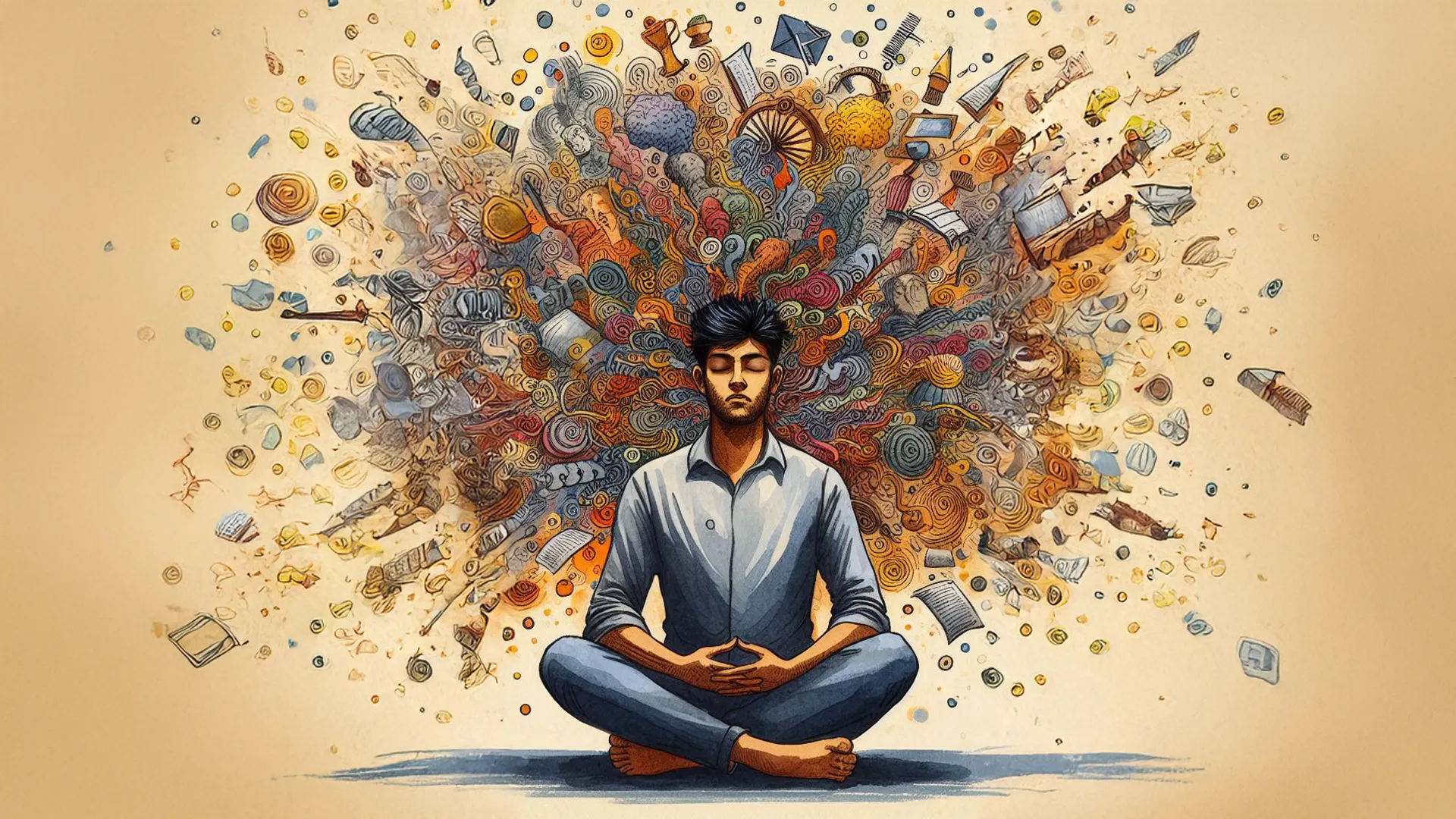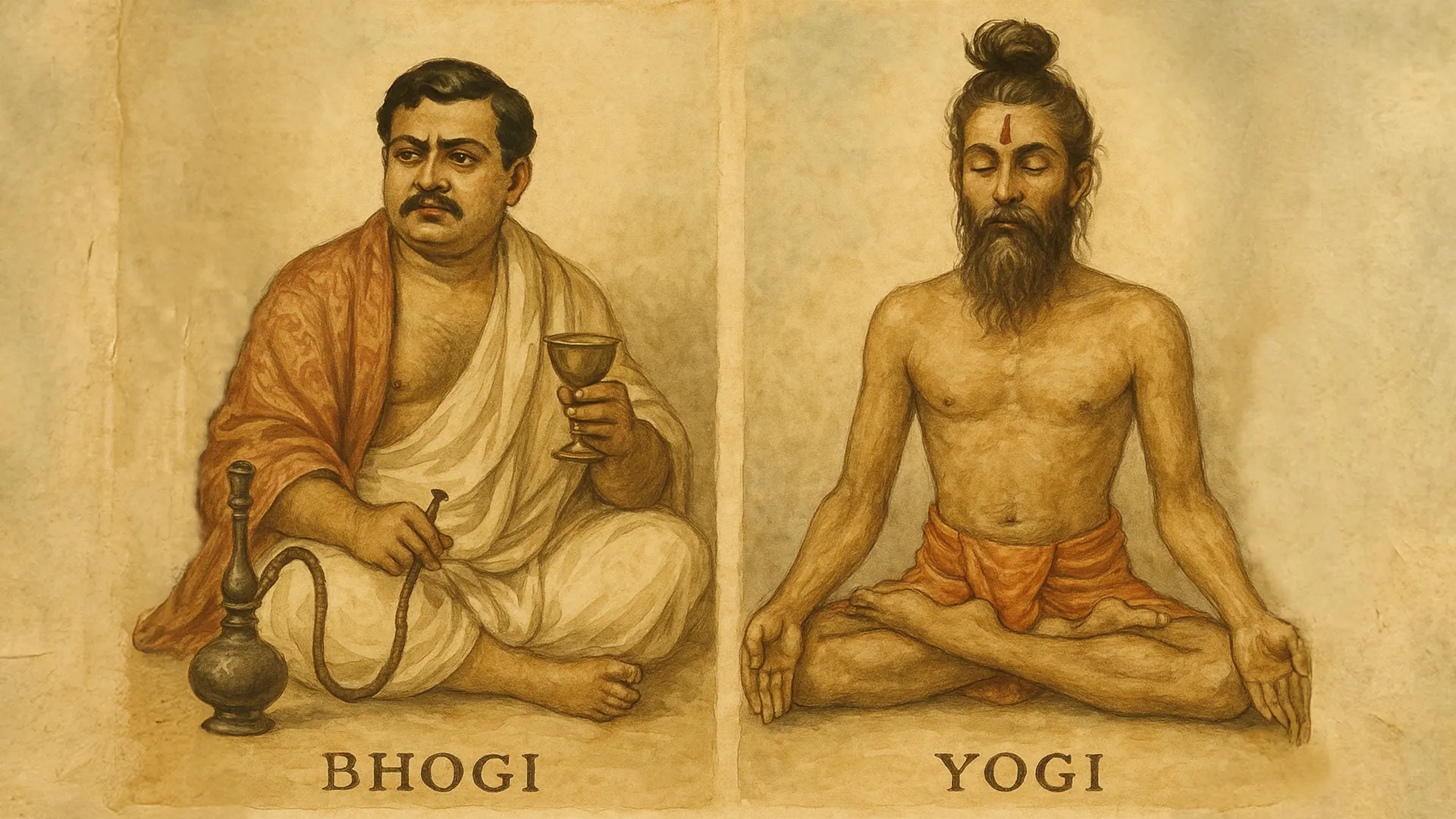Meditation is an inherent aspect of our lives, familiar to each of us in various forms. A composer meditates continuously on the notes that comprise their music, while a writer reflects on the narrative unfolding in their mind. Similarly, a drunkard contemplates the solace that the next bottle might bring to their troubled thoughts, and a lover focuses intently on their beloved.
What distinguishes meditation within the context of yogic practices is not merely the act itself, but rather the subject of our meditation. It is this focus that fundamentally differentiates the practice and its outcomes.
Despite their best intentions, many individuals face challenges with meditation for several fundamental reasons. Below are the three primary factors contributing to these difficulties:
- Lack of Understanding the Purpose
Many individuals view meditation merely as a quick solution for stress relief, often overlooking its true purpose: The true purpose is to foster a connection between the mind and the divine, purifying it through the focus on sacred thoughts. Without this spiritual foundation, meditation can become a mechanical practice, leading to feelings of boredom or frustration. - The Restless and Untrained Mind
Swami Mukundananda often highlights that the mind is naturally drawn to worldly objects due to repeated impressions (sanskars). Under the influence of maya, it gravitates toward material distractions. Both external temptations—such as the senses chasing worldly pleasures—and internal turbulence pull focus away from meditation.
An untrained mind is likened to a monkey, restless by nature. Now, imagine if this monkey were afflicted with hysteria—its agitation would multiply. Add intoxication to the mix, and its instability would escalate further. Finally, if a scorpion were tied to its tail, the chaos would be unimaginable! This vivid analogy underscores the mind’s tendency toward distraction and the need for discipline to attain inner peace. - Ineffective Technique
Trying to quiet the mind without a structured approach often leads to frustration. Meditation without proper preparation is like attempting to control a wild horse without reins—it lacks direction and effectiveness.
Various techniques exist, such as focusing on the breath, the centre of the eyebrows, psychic centres in the spinal cord, a serene lake, or a source of light. While these methods enhance concentration, their effects are temporary and incomplete. The fundamental issue with these mechanical techniques is that they do not address the purification of the mind.
As long as emotions like lust, anger, greed, envy, and illusion persist, they inevitably disrupt the concentration gained through limited meditation. Another challenge is that these techniques aim to halt the flow of thoughts and force stillness upon the mind—an approach that contradicts its natural tendencies, making such practices difficult and monotonous. True meditation requires a deeper transformation that goes beyond mere focus.
Optimal Meditation Technique: The Power of Visualisation
Swamiji underscores the profound impact of visualisation in meditation, highlighting it as a powerful tool for shaping reality. Visualisation goes beyond mere imagination—it involves mentally picturing success, progress, or desired outcomes before they manifest. Whether athletes mentally rehearse their victories or entrepreneurs envision their dream ventures, visualisation bridges the gap between aspirations and achievements.
Roopdhyan refers to the loving remembrance or visualisation of God. "Roop" signifies form, while "Dhyan" denotes meditation, making Roopdhyan the practice of directing one's emotions toward a specific divine form of God.
In Roopdhyan, God is perceived in two primary aspects: His personal form (sākār) and His abstract or formless aspect (nirākār). Since focusing on an abstract can be challenging, meditating on the sākār aspect provides the mind with a tangible foundation, fostering a deeper spiritual connection.
Jagadguru Kripaluji Maharaj emphasises that Roopdhyan is the most vital meditation practice. By visualising the divine form of God, individuals immerse their minds in meditation, cultivating a profound sense of devotion. Given that the mind primarily operates through images and emotions, envisioning a divine figure, such as Shree Krishna playing the flute or Bhagwan Ram radiating compassion, offers a concrete focal point for spiritual engagement.
Most importantly, God is all-pure, and when we fix our minds upon Him, our minds too become purified. The Bhagavad Geeta (14.26) states:
मां च योऽव्यभिचारेण भक्तियोगेन सेवते |
स गुणान्समतीत्यैतान्ब्रह्मभूयाय कल्पते ||
māṁ cha yo ’vyabhichāreṇa bhakti-yogena sevate
sa guṇān samatītyaitān brahma-bhūyāya kalpate
Shree Krishna tells Arjun:
"I am beyond the three modes of material nature. By engaging the mind in meditation upon me, through Bhaktiyog (surrendering everything to the will of God), your mind will transcend the three modes and become Divine."
"I am beyond the three modes of material nature. By engaging the mind in meditation upon me, through Bhaktiyog (surrendering everything to the will of God), your mind will transcend the three modes and become Divine."
Our minds naturally gravitate toward qualities in people—we admire kindness, intelligence, honesty, and gentleness. This same principle applies to devotion. By meditating on the limitless divine virtues of God, we can elevate our consciousness and deepen our spiritual connection.
Scientific research substantiates this practice: studies indicate that vividly imagining an action activates the brain in a manner akin to the actual execution of that action. This process reinforces neural pathways, fosters confidence, and boosts motivation. When coupled with effort and strategic planning, visualisation can transform aspirations into tangible goals.
The key is clarity—seeing the details, feeling the emotions, and believing in the vision. Whether it’s personal growth, career milestones, or creative pursuits, the ability to visualise success is often the first step toward making it a reality
Benefits of Meditation
According to Swamiji, regular meditation offers numerous advantages:
- Purification of the mind and enhancement of willpower
- Increased focus and mental clarity
- Reduction of stress and negative emotions
- Deepening of our relationship with God
- Planting of divine sanskars for spiritual growth
Step-by-Step Meditation Technique by Swami Mukundananda
Here is a simplified version of the guided meditation taught by Swamiji:
- Prepare the Body & Mind
Sit comfortably with your spine erect. Close your eyes and take a few deep breaths. - Relax the Body
Mentally scan your body and relax each part, from head to toe. - Focus on Breathing
Observe your breath to calm your mind. There is no need to control it—simply watch. - Visualise the Form of God
Imagine the divine form of your chosen deity. For instance:
Shree Krishna with a serene smile, playing the flute under a tree in Vrindavan. - Feel the Presence of God
Invite in emotion (bhav). Feel God's love, protection, and grace enveloping you. - Repeat a Divine Name or Affirmation
Silently repeat a mantra or name, such as “Radhey Shyam” or “Ram Ram,” while maintaining your visualisation. - End with Gratitude
Offer a prayer of thanks and gradually bring your awareness back.
Sample Guided Meditation- Roopdhyan of Shree Krishna
Visualise Shree Krishna standing before you. He is adorned in a yellow silk dhoti and a garland of fresh flowers. His flute rests gently against His lips as He gazes lovingly at you. With each breath, you feel increasingly calm, cherished, and connected. Now silently repeat, 'Radhey Shyam... Radhey Shyam...' Allow each repetition to deepen your focus and devotion…
Final Thought: Repeat, Refine, and Rejoice
Success in meditation is not about perfection, but rather about practice. As Swamiji articulates:
“Even five minutes of focused meditation with deep bhakti is more beneficial than one hour of distracted sitting.”
“Even five minutes of focused meditation with deep bhakti is more beneficial than one hour of distracted sitting.”
Want more guided meditations? Begin your journey with the Swami Mukundananda App today.








